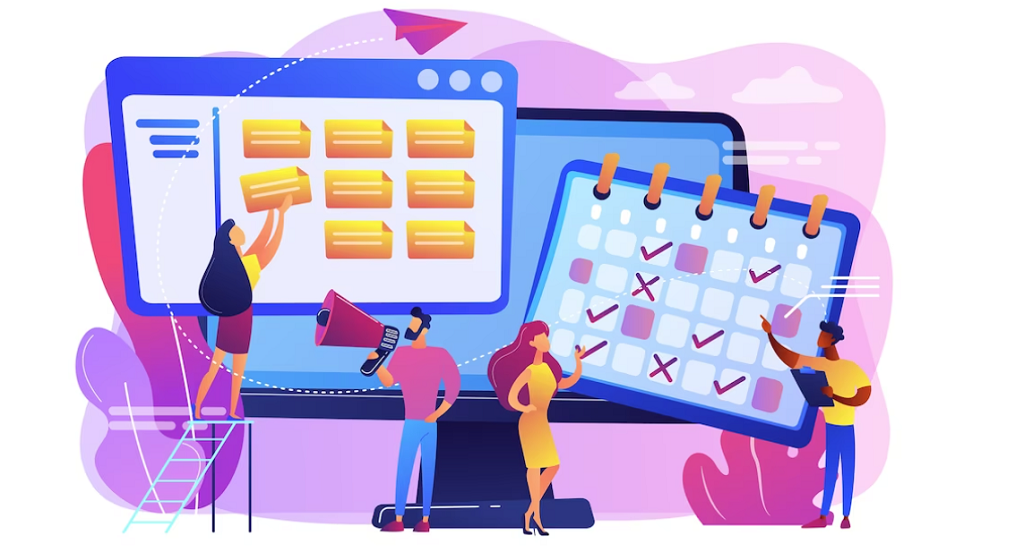Nonprofits often rely on volunteers to bring their events to life. Whether it’s a fundraising gala, community outreach program, or a charity run, volunteers are the heartbeat of these organizations. While their enthusiasm and passion are invaluable, coordinating and managing volunteers can be a challenge. Nonprofits face the unique difficulty of organizing individuals who may have limited availability, varying skill sets, and diverse roles. This is where event staff scheduling software steps in, providing a powerful tool to streamline the process.
Event staff scheduling software is typically associated with large-scale, corporate events, but its benefits extend far beyond that. For nonprofits, managing volunteers becomes significantly easier with the use of this software. It allows for automated scheduling, real-time updates, and enhanced communication—all of which help nonprofits efficiently organize their volunteers and ensure the success of their events.
1. Automated Scheduling Saves Time
For nonprofits, time is often a scarce resource. Many organizations run on lean teams and limited budgets, making it difficult to manually coordinate volunteer schedules. Event staff scheduling software provides an automated solution, allowing managers to create schedules quickly and easily.
By inputting volunteers’ availability and skill sets into the software, you can create balanced schedules in minutes rather than hours. This not only saves valuable time for nonprofit managers but also ensures that all event roles are adequately covered. Whether you’re organizing shifts for a large charity event or a smaller community gathering, the software helps avoid the confusion and errors that often arise from manual scheduling methods.
2. Matching Volunteers to the Right Roles
One of the key challenges in managing volunteers is ensuring they are placed in roles where they can contribute most effectively. Not every volunteer has the same skill set, and some may have particular preferences for the type of work they want to do. Event staff scheduling software allows you to match volunteers with the tasks that best suit their skills and interests.
For example, some volunteers might prefer front-line roles, interacting with attendees or managing registration, while others may prefer behind-the-scenes tasks like setting up or packing down equipment. With the software, you can easily assign volunteers to roles that align with their strengths, ensuring that your event runs smoothly and efficiently.
3. Real-Time Updates Keep Everyone Informed
Events are fluid, and last-minute changes are often inevitable. A volunteer may not show up, or the event may require an additional pair of hands at a particular station. With event staff scheduling software, you can make real-time adjustments to the schedule and instantly notify your volunteers of any changes.
This feature is especially valuable for nonprofits, where volunteers may be juggling their commitments with other responsibilities. With real-time notifications, volunteers can be updated on shift changes, location adjustments, or any other relevant details without delay. This reduces the risk of confusion and ensures that everyone is on the same page.
4. Improved Communication Among Volunteers and Managers
Effective communication is key to organizing any event, but it’s particularly important when dealing with volunteers. Many nonprofit managers struggle to keep their volunteers informed, often relying on scattered email chains, phone calls, or text messages. Event staff scheduling software centralizes communication, ensuring that messages are delivered clearly and efficiently.
With features like in-app messaging and notifications, managers can send updates, reminders, and important instructions directly through the software. Volunteers can also communicate with each other, making it easier to coordinate shift swaps or request additional support if needed. This reduces the likelihood of miscommunication and ensures that everyone knows their responsibilities well in advance of the event.
5. Tracking Volunteer Attendance and Performance
For nonprofits, tracking volunteer attendance and performance is important for future planning. Knowing which volunteers reliably show up for their shifts, as well as how well they perform, can help managers decide who to call upon for future events. Event staff scheduling software makes it easy to track this information.
With digital check-ins and attendance tracking, managers can monitor which volunteers are fulfilling their commitments and which may need to be reminded of their responsibilities. Additionally, if a volunteer consistently excels in a particular role, this information can be used to assign them similar tasks in the future, optimizing your volunteer management efforts.
6. Simplifying Volunteer Coordination for Large-Scale Events
Larger nonprofit events, like fundraisers or charity races, often require dozens or even hundreds of volunteers. Coordinating so many people can quickly become overwhelming, especially if you’re using manual methods like spreadsheets or paper sign-up sheets. Event staff scheduling software simplifies the coordination process by offering tools that scale with the size of your event.
The software allows you to create and manage large-scale volunteer teams with ease. You can categorize volunteers by role, shift, or location and make adjustments as needed. This scalability is crucial for nonprofits running high-impact events, as it ensures that even the largest volunteer teams are organized and efficient.
7. Making Volunteering More Accessible and Flexible
One of the biggest hurdles for nonprofit organizations is retaining volunteers over time. Volunteers may have other obligations, and the rigidity of some volunteer opportunities can discourage continued participation. Event staff scheduling software helps by offering flexibility in how shifts are managed and allowing volunteers to update their availability or swap shifts with ease.
By giving volunteers more control over their schedules, nonprofits can create a more welcoming and accessible environment for their team. Volunteers feel valued when they are empowered to choose shifts that work best for them, and this increases their likelihood of returning for future events.
Conclusion: Event Staff Scheduling Software as a Must-Have for Nonprofits
For nonprofit organizations, coordinating volunteers is one of the most critical aspects of successful event planning. Event staff scheduling software not only simplifies the scheduling process but also improves communication, matches volunteers to the right roles, and allows for real-time updates. By implementing this software, nonprofits can ensure that their events are organized and that volunteers have a positive, well-structured experience. In the end, this leads to smoother events, happier volunteers, and better outcomes for the nonprofit’s mission.
FAQs
- Can event staff scheduling software handle large volunteer teams?
Yes, event staff scheduling software is designed to scale, making it easy to manage large teams across different roles and shifts. - How does the software help with last-minute volunteer cancellations?
The software provides real-time updates, allowing managers to reassign shifts and notify volunteers of any changes immediately. - Is event staff scheduling software affordable for nonprofits?
Many scheduling software providers offer discounted or even free versions for nonprofit organizations, making it accessible to those with smaller budgets. - Can volunteers update their availability themselves?
Yes, volunteers can input their availability directly into the system, which helps managers create accurate and efficient schedules. - How does the software improve communication with volunteers?
Event staff scheduling software centralizes communication, allowing managers to send updates, instructions, and reminders through in-app messaging or email notifications.











